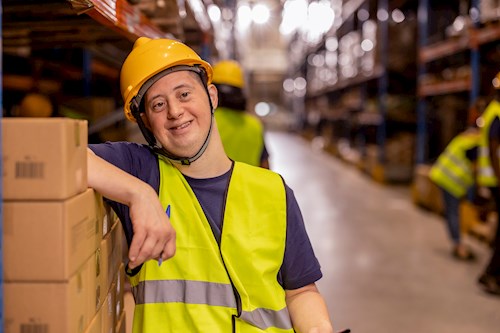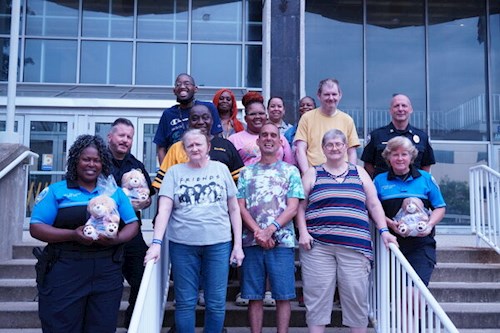Disability inclusion is one of those topics that HR teams recognize as important. Yet, it often gets overshadowed by more pressing priorities, like hiring needs, retention goals, training programs and policy updates. The truth is that disability inclusion directly supports all of those priorities. At Weaver Industries, where we’ve spent more than five decades creating meaningful employment opportunities for individuals with disabilities, we’ve seen how inclusion strengthens teams, lifts culture and creates measurable business value. It’s not an add-on. It’s a foundation.
For many HR departments, the challenge isn’t a lack of interest. It’s knowing where to begin. And often, the biggest gaps aren’t the obvious physical ones, such as ramps or signage. The real work happens in your processes, your culture, your job design and in the everyday interactions that shape the employee experience.
Disability inclusion starts with understanding that accessibility is broader than most companies realize. Physical access matters, of course, but so does the way information is shared, how workflows are built and whether employees have the tools they need to contribute. Accessibility also shows up in job descriptions. Are they focused on important responsibilities, or padded with requirements that unintentionally exclude qualified candidates?
Recruitment is another area where HR teams can unintentionally limit their reach. Many organizations want to hire more people with disabilities, but struggle to find candidates. More often than not, the barrier isn’t a lack of talent; it’s the channels being used or the language used to attract applicants. When companies approach outreach intentionally and partner with community organizations, the difference is immediate. And when onboarding is structured to offer support from the start, employees are far more likely to thrive.
Once someone is hired, the real measure of inclusion is how well they are integrated into the team. This doesn’t happen automatically. It requires clear communication, leadership modeling and a commitment to understanding each employee’s strengths. Many teams simply haven’t had experience working alongside individuals with disabilities, and uncertainty can lead to hesitation. HR plays a vital role in setting expectations, offering training when needed and fostering an environment where asking questions and seeking understanding is encouraged.
Policies and internal processes also shape culture. Revisiting job structures, accommodation procedures, development opportunities and feedback loops can open doors that may have been unintentionally closed. Even small updates, such as making it easier for employees to request support or conducting regular check-ins, signal that inclusion isn’t just a value on paper, but a practice rooted in everyday operations.
HR leaders often share similar concerns. Some fear that accommodations will be expensive, but in reality, most are low-cost and simple to implement. Others worry that employees won’t know how to work effectively together. But at Weaver, where individuals with and without disabilities work side-by-side in divisions like ProPak, TruClean, EarthCare and SecurShred, we’ve seen how quickly collaboration becomes natural when teams receive guidance and structure. Inclusion doesn’t slow down work; it improves performance and morale.
Partnership can make a tremendous difference for HR teams building or expanding their inclusion efforts. Weaver’s Supported Integration® model is grounded in the idea that meaningful work and strong business outcomes go hand-in-hand. When organizations partner with Weaver, they gain access not just to a dedicated workforce but to decades of experience supporting individuals with disabilities in professional settings. For HR leaders, this offers a practical way to broaden talent pipelines, strengthen training and build internal confidence around disability inclusion.
Disability inclusion isn’t a box to check or a statement to publish. It’s a commitment reflected in everyday decisions: who you hire, how you train, how you communicate and how you support your people. When HR leads this work, the impact spreads across the entire organization. It influences morale, innovation and reputation, creating a workplace where everyone has the opportunity to contribute.
The good news is that inclusion doesn’t require sweeping, overnight changes. It simply requires a first step: revisiting a job description, starting a conversation, asking for input or exploring a partnership. At Weaver Industries, we’ve seen how these seemingly small steps create ripple effects that transform teams and strengthen companies. For HR departments ready to move forward, now is the perfect time to begin.

Disability inclusion isn’t extra work for HR—it’s part of building a stronger team. It starts with clear job descriptions, better recruiting outreach and supportive onboarding, and continues through everyday communication and culture. Most accommodations are simple, and with the right partners, like Weaver, inclusion becomes easier and more effective. Small steps add up quickly and help create a workplace where everyone can contribute.

At Weaver Industries, soft skills like communication, teamwork and confidence are more than job essentials—they’re the foundation of personal and professional growth. Through daily collaboration, coaching and peer support, employees learn to express themselves, work together and build lasting confidence. These people-centered skills help create inclusive workplaces where everyone can contribute, connect and thrive.

Weaver Industries measures impact in more than numbers; it’s about the real moments that change lives. From the pride of a first paycheck to the confidence gained through new skills, impact shows up in the everyday work that brings dignity, inclusion and purpose. With staff who pour compassion and creativity into their roles, Weaver creates ripple effects that strengthen families, support local businesses and build communities where everyone belongs.